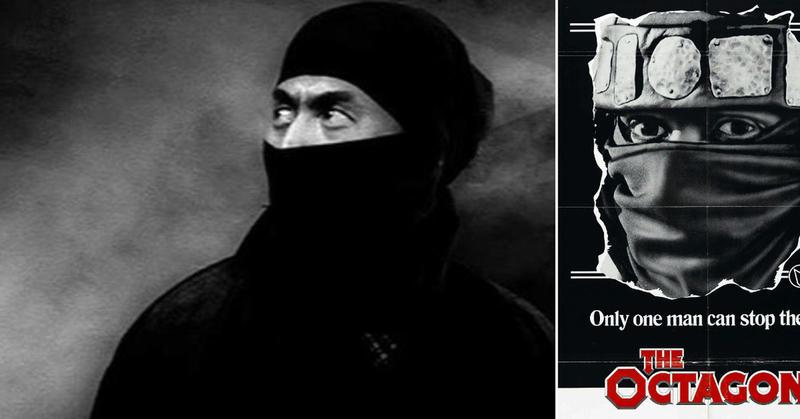How Ninjas, As You Know Them, Only Date Back To The '60s
By | August 20, 2019

How old are ninjas?
Pop culture in the U.S. and Japan has long been fascinated by the ninja, a black-clad assassin practicing ancient Japanese martial arts and armed with throwing stars and swords. Silent but deadly, with catlike agility and reflexes, the ninja is there when you least expect him and gone before you know it. The proliferation of ninja movies, comic books, and other iconography suggests ninjas, as we know them, have always been a thing. Sure, Americans have put their own spin on ninjas, working them into Chuck Norris movies, Teenage Mutant Ninja Turtles, Beverly Hills Ninja, and naming everything from kitchen knives to coffee makers after them, but that's what happens -- old traditions are reinterpreted, remixed, and ripped off in the circle of life.
But the basics of ninjadom -- the look and the purpose and the fighting prowess -- surely those have some authenticity, right? Not as much as you might think.
The Ninjas Of The '60s Are The Ninjas We Know Today

Ninjas were present in Japanese entertainment at least as far back as the 1950s, but they didn't become the deadly, stealthy, morally ambiguous assassins we know until the early '60s. According to vintageninjas.com, the movie that set the template for modern ninjas was 1962's Shinobi No Mono. The narrative pitted scrappy subversive anti-heroes in black pajamas against moneyed, aristocratic samurai. This romantic ideal of the ninja was immediately appealing, and the movie spawned many sequels and imitators -- in Japan. Ninjas were still nearly unknown in the western world.
Ian Fleming had some sense of the burgeoning ninja mystique, and he wrote them into his 1964 James Bond novel You Only Live Twice. When the book hit the screen in 1967, audiences were fascinated with the ninja culture presented in the form of Tiger Tanaka (Tetsuro Tanba) and his ninja army.
The Ninja Appeal Infiltrated U.S. Entertainment In The '70s

In the late '60s and into the '70s, ninjas and ninjutsu became more and more common in American entertainment. Ninjas appeared on TV shows including Hawaii Five-0, Kung Fu, Baretta and Quincy. James Clavell's bestselling 1975 novel Shogun included ninjas, and they were popular villains in mainstream comic books by Marvel and DC. And significantly, American martial-arts magazines were running articles on ninjutsu and carrying advertisements for throwing stars and other ninja weapons.
In The '80s, Ninjas Exploded

The ninja boom happened in the '80s. In 1980, the Shogun miniseries put ninjas back on TV, the Chuck Norris movie The Octagon put them on the big screen, and Eric Van Lustbader's The Ninja was a bestselling novel. In 1981, the hottest comic book was Daredevil, written and drawn by Frank Miller and featuring a storyline that included a ninja clan called The Hand. That same year, Enter The Ninja was a surprise hit in theaters.
The ninja boom, based primarily on ideas from 20-year-old Japanese ninja movies, was in full effect.
The True Origins Of the Ninja

According to Japanese folklore, the first ninja descended from a demon that was half-man, half-crow. However, ninjas more probably emerged as a force to oppose the upper-class samurai in medieval Japan. One of the major differences between samurai and ninjas was that samurai are part of a social class while ninja is technically a profession. Ninjas practice the discipline of ninjutsu, and ninjitsu is also considered their strategy: their stealth and their guerilla warfare techniques. Their ninjutsu, their stealth, began to develop between 600 and 900 A.D.
Who They Were

The story goes that Daisuke Togakure, a samurai, lost his honor as a samurai, and, while wandering in the mountains, met Kain Doshi, a Chinese warrior-monk. Together, the two of them developed ninjutsu, a theory of guerilla warfare. Daisuke’s descendants created the Togakureryu, the first ninja school. However, other sources state that ninjas had their origins with the yamabushi, or mountain priests. While the origins of ninjitsu are a bit unclear, what does seem to be true is that ninjitsu has two important concepts: gathering intelligence and using strategies such as spying, espionage, infiltration, and assassination to erode an enemy’s power.
Some of the ninjas, like Daisuke, were disgraced samurai, while most of them were farmers or villagers who had learned to fight by any means necessary. They practiced “mountain asceticism” to train their bodies and minds in preparation for becoming a ninja. Women were also ninjas, called kunoichi, and they acted as spies, disguised as dancers, concubines, and servants. They sometimes committed assassinations as well.
Ninjas Seem To Fade, Until The 1950s

While they did have a significant role in Japan, they were mainly a force between 1336 and 1600. With the Edo period, a time of stability and peace, the ninja became the stuff of stories and legends.
In the 1950s, ninjas experienced a sort of rebirth. Futaro Yamada released a novel The Kouga Ninja Scrolls, about star-crossed lovers from rival ninja clans. In this novel, each of the clans has superhuman abilities. The novel pushed the ninjas out of the realm of history and into fantasy. In the early '60s, those ninja movies gave way to the grittier, less magical portrayals of ninjas that have become so familiar to us.

Historic ninjas did not wear the “ninja costumes” that we see in popular culture. The image of a ninja outfit first appeared in the early 19th century, in an image by the artist Hokusai and may have been based on traditional Japanese theatrical stagehands, called kuroko. Historically, ninja dressed to blend in. They also did not carry samurai swords or other weapons portrayed in popular culture.
